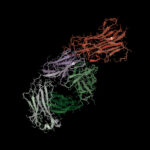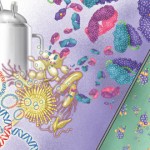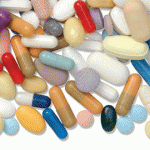Introduction & Objectives
More than 20 biosimilars have been approved for marketing in the U.S., and more than 50 have been approved in Europe. Non-medical, mandatory switching and required use of a biosimilar for patients newly initiating treatment have resulted in the rapid uptake of biosimilars in some Scandinavian countries. However, in the U.S., changes in biosimilar prescribing patterns have occurred gradually in the absence of similar large-scale mandates from healthcare institutions or payers. Few studies have investigated the uptake of biosimilars in the U.S.
Currently in the U.S., Medicare (one of the largest payers for infused therapies) is not permitted to negotiate drug prices. Infused therapies are reimbursed based on the average selling price (ASP) over the prior quarter. Biosimilar therapies that are priced lower than their reference products (lower ASP) will have lower reimbursement rates and may have less room to negotiate with institutions for a lower purchase price compared with the reference product. Because the financial incentive to use a product depends on the difference between the reimbursement rate and the purchase price, an institution may not have an incentive to use the lower priced product. This may result in slow adoption of biosimilars and negatively impact the ability of these products to effectively stem increasing healthcare costs.
Baker et al. set out to compare the uptake in biosimilar ordering at a Veterans Affairs Medical Center (VAMC) to that at an academic medical center, where institutional incentives for infused medications differ.
Methods
These researchers performed a cross-sectional study of medical record data and estimated institutional financial incentives at two medical centers in Philadelphia: 1) the University of Pennsylvania Health System (UPHS), and 2) the local VAMC. All ordering events for filgrastim or infliximab products were quantified over time and stratified according to product (biosimilar vs. reference product) and center. Financial incentives to the institutions over time were determined based on actual drug costs for the VAMC, and average sales prices (ASPs) and Medicare Part B reimbursement rates for UPHS.
Results
UPHS had 15,761 infusions of infliximab, of which 99% were for the reference product. The VAMC had a sharper decline in the use of reference products; 62% of the 446 infliximab infusions ordered at the VAMC were for the reference product. ASPs were consistently lower for biosimilar infliximab products, but the estimated institutional financial incentives remained similar over time for biosimilar and reference infliximab at UPHS.
At the VAMC, the costs for 100 mg vials of reference infliximab and infliximab-abda were $623.48 and $115.58, respectively: a $507.90 (81%) savings per vial.
Conclusion
The uptake of infliximab biosimilars has been slow at an academic medical center compared with a nearby VAMC, where financial savings are realized by the institution from biosimilar use. Slow adoption of biosimilar medications may impact the rates of decline in costs.
Refer to the full study for all source material.
Excerpted and adapted from:
Baker JF, Leonard CE, Lo Re, V III, et al. Biosimilar uptake in academic and Veterans Health Administration settings: Influence of institutional incentives. Arthritis Rheumatol. 2020 Jul;72(7).



